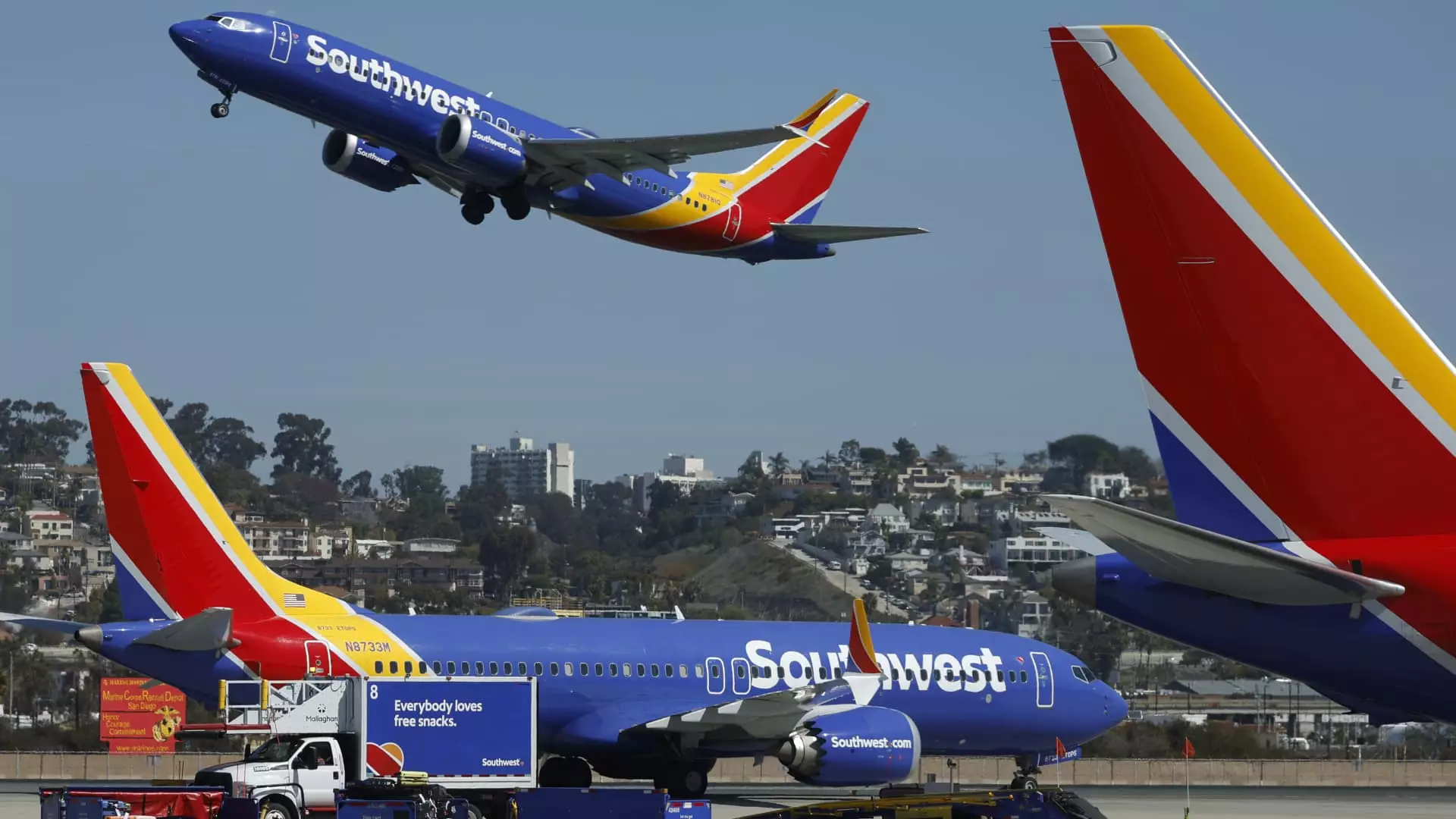In an era where consumer expectations are constantly evolving, Southwest Airlines finds itself at a crucial crossroads. CEO Bob Jordan’s recent statements reflect a keen awareness of this shift, emphasizing the airline’s commitment to adapt and innovate in the face of mounting competition. As it stands, Southwest is not merely a budget airline; it now aims to capture the interest of high-spending travelers, a demographic that has traditionally favored legacy carriers. For an airline that has carved out a niche based on simplicity and affordability, this shift raises questions—not only about its identity but also about its future trajectory.
Responding to Competitive Pressures
Historically, Southwest has prided itself on a model that champions open seating, free checked bags, and a no-frills travel experience. However, the competitive landscape is evolving, with rivals like Delta and American Airlines making significant investments in premium offerings and upscale airport lounges. The pressure is palpable, and Jordan’s acknowledgment of customers defecting to competitors due to the absence of amenities such as lounges or long-haul capabilities signals a shift in strategy that cannot be overlooked. While it is refreshing to see an airline take feedback seriously, one must wonder if all that glitters is gold—or if this evolution compromises the company’s original ethos of low-cost travel.
Jordan admits the need for a competitive response, stating, “Whatever customers need in 2025, 2030, we won’t take any of that off the table.” While this statement might resonate as a proclamation of adaptability, it also calls into question the core values that have historically defined Southwest. Our airline industry thrives on brand loyalty, and for a company known for its egalitarian approach to air travel, the introduction of a more tiered service model could alienate long-time supporters.
The Risks of Losing Identity
The core dilemma emerges: can Southwest maintain its unique identity while also beginning to offer premium services? The idea of lounges and enhanced seating options undoubtedly appeals to some customers, particularly in high-traffic hubs like Nashville. Yet, there is an inherent risk in losing the very traits that made Southwest stand out in a crowded market. Presenting itself merely as a competitor to legacy airlines could dilute the company’s distinctive “Southwest way” philosophy.
Transforming its image to cater to luxury-favoring travelers does not come without challenges. As Jordan aptly pointed out, “I want to send fewer and fewer customers to another airline.” However, as Southwest strives to meet the demands of a more affluent clientele, would it effectively become indistinguishable from the airlines it once competed against?
The Balancing Act of Transformation
Furthermore, the financial realities are sobering. With airfares dropping and economic uncertainty looming, Jordan’s optimism about expanding into the luxury market raises eyebrows. The move to adopt policies such as basic economy tickets and bag fees—as seen with competitors—demonstrates that even a beloved institution must grapple with financial pressures. Yet, strategic planning can sometimes border on desperation; it isn’t merely about alluring high-spending customers, but understanding how to sustain profitability amid fluctuating market dynamics.
Moreover, while utterly revolutionizing Southwest may seem like a noble endeavor, it risks alienating a demographic that has cherished the airline for its straightforward approach to air travel. We must ask ourselves: is it worth trading authenticity for potential profit? A cautious embrace of premium services could attract high-rolling customers, but a complete pivot might betray the loyal travelers who’ve kept the airline thriving for decades.
Long-Term Ambitions in Sight
The prospect of Southwest finally introducing long-haul international flights is both thrilling and daunting. The company has long relied on the Boeing 737, a staple in its fleet. Whether they are ready to invest in new, long-range aircraft remains uncertain. Partnerships with airlines like Icelandair and China Airlines are stepping stones, yet they are no substitute for a direct service to Europe. This hesitation illustrates the challenges of transformation despite a clear vision for expansion.
The path ahead for Southwest Airlines is fraught with complexity. Jordan’s leadership may herald an era where the airline successfully combines its beloved low-cost ethos with a higher-end travel experience. Still, the true test lies in execution. Ensuring that the essence of “serving the people” does not get lost in the pursuit of increased revenue will be vital as the airline grapples with its identity amidst shifting consumer expectations.

